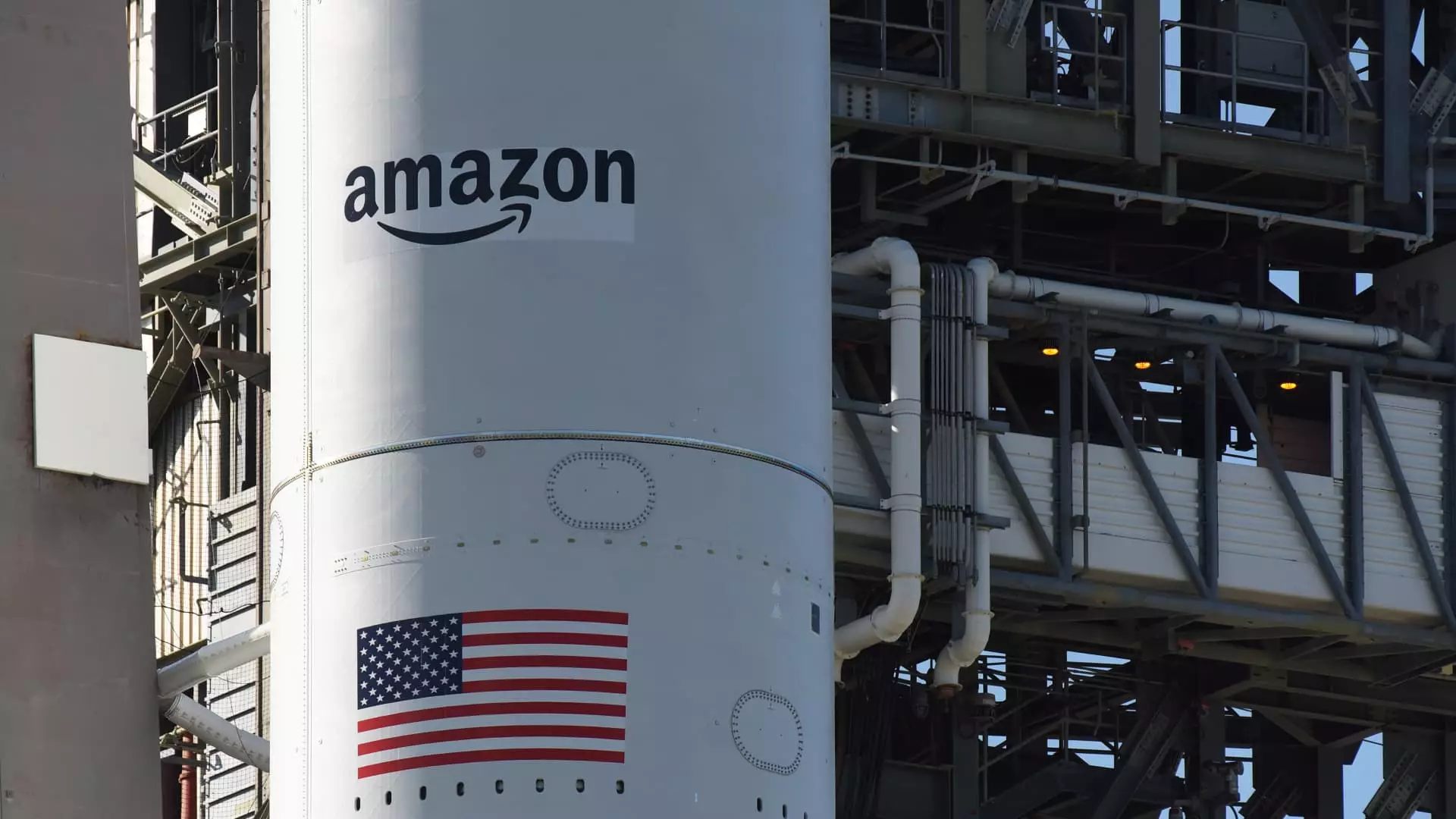Amazon’s ambitions to establish a formidable presence in satellite internet have hit a wall, and this time, Mother Nature is to blame. The delay in launching their Kuiper internet satellites due to inclement weather conditions raises more than just logistical concerns; it reflects the precarious nature of space exploration and the race to dominate the growing market of internet connectivity from the skies. The mention of “stubborn cumulus clouds” and heavy winds during the anticipated launch from Cape Canaveral, Florida, embodies the fragility of Amazon’s pursuit, where every delay could cost them precious time in a fiercely competitive landscape.
The United Launch Alliance (ULA), which was supposed to execute the launch, called off the operation with a clear statement: “Weather is observed and forecast NO GO for liftoff.” This is more than just a technical setback; it echoes broader issues about preparedness and the inherent unpredictability of the aerospace industry. While delays due to weather are not unheard of, they do put heightened pressure on Amazon to stick to its aggressive launch schedule, set to meet strict requirements laid out by the Federal Communications Commission (FCC).
The Intensifying Competition
As Amazon scrambles to get its Kuiper satellites into orbit, it finds itself racing against the clock and its most formidable rival, SpaceX. With 8,000 satellites already operational, SpaceX’s Starlink has cemented its dominance in the satellite internet market. Elon Musk’s dual presence as a private sector innovator and a pivotal figure in governmental advisory roles complicates the competitive landscape even further. As SpaceX expands its reach into federal contracts, Amazon risks being overshadowed and sidelined in a marketplace that’s not just about technology but also about political influence.
This isn’t merely a race of technological prowess; it’s a contest of agility and connections. Given Musk’s prominent role within the political arena, Amazon must not only match the technical capabilities of Starlink but also navigate a complex web of regulatory frameworks and competitive pressures that come with it.
Implications for Amazon’s Long-term Strategy
The stakes for Amazon run deep. With a deadline to have a significant portion of its satellite constellation operational by mid-2026, any delay can reset the countdown against incumbents like SpaceX. It’s worth pondering whether Amazon’s ambitious foray into space-based internet services is ambitious overreach or a calculated risk. The company has the resources, but does it have the strategic foresight to outmaneuver rivals who are already entrenched in the marketplace?
Amazon’s endeavor speaks volumes about the future of technology and communication. The prospect of high-speed, low-latency internet access via Kuiper satellites could revolutionize connectivity for consumers and governments alike. However, the road ahead is fraught with uncertainties. The success of this venture will determine not just Amazon’s standing in the tech landscape but also the broader implications for innovation in connectivity. As the countdown resumes, will Amazon overcome the barriers of weather, competition, and its own strategic missteps to become a leader in satellite internet? The answer remains to be seen, but the urgency has never been clearer.

